- Home
- Antonia Fraser
Gunpowder Plots: A Celebration of 400 Years of Bonfire Night Page 2
Gunpowder Plots: A Celebration of 400 Years of Bonfire Night Read online
Page 2
To ensure his accession, the king planned both to build up English support and to disarm any foreign opposition. He corresponded with the young earl of Essex, Elizabeth’s last favourite, hoping that Essex’s inside information on court politics would ease his way to the throne. Many of the earl’s followers were Catholics, members of the post-Reformation religious minority in England that bore the burden of the recusancy laws (aimed at those who would not attend their Protestant parish churches). The laws were unevenly enforced, and many low-profile Catholics got off virtually scot-free, but the psychological burden was considerable and most Catholic males knew their career prospects were blighted if they adhered openly to the old religion. Within the small Catholic community was a much smaller group of proudly committed, faithful dévots to whom the recusancy laws might bring grave financial hardship and years in prison. For Catholic priests, particularly those belonging to the new Counter-Reformation order of the Jesuits, service in England meant disguise, the constant fear of betrayal and possibly a hideous death by hanging, drawing and quartering.
Essex occasionally indulged in a rhetoric of tolerance towards those Catholics who were politically loyal. As a result, many of them followed him in offering their service to the Scottish claimant to the English throne. In Europe, the Protestant regimes of the Dutch and the Scandinavian monarchies would not oppose James, but Spain, the leading power of Catholic Europe, might make trouble. In 1588, as the Armada sailed, Philip II had announced that his daughter, the Infanta Isabella, descended from the English King Edward III, would replace Elizabeth as queen. The Armada was defeated, but Isabella’s claim remained a part of official Spanish policy, although she had few if any Catholic supporters in England. In 1595 the Scottish Catholic gentleman John Ogilvy of Poury began a journey across Europe which included a visit to Spain, where he indicated that James might become a Spanish ally and possibly also a Catholic. This informal probe was followed after the death of Philip II in 1598 by the mission of another Catholic, Lord Robert Sempill, who hoped to persuade the new king, Philip III, to recognize James as Elizabeth’s heir. Neither of these diplomatic missions was successful but they convinced the Scottish Jesuits resident in Madrid that their king was a friend to Catholics.
The attitude of the papacy might be crucial in swinging the support of other Catholic states such as Savoy and Tuscany. Here, James turned to his advantage the conversion to Catholicism of his wife, Anne of Denmark, who had been a Lutheran on her arrival in Scotland in 1590. Anne came under attack from the Scottish Presbyterian Kirk, which deplored her extravagance and love of court entertainments. The Kirk’s censorious hostility alienated the young queen from its dour Protestantism. Her close friend Henriette, the French-born wife of James’s supporter the marquis of Huntly, was influential in leading the queen to take instruction in Catholicism. In 1599 James wrote to Pope Clement VIII on a minor ecclesiastical matter, signing himself in Latin as ‘your most obedient son’. Then Queen Anne wrote to the Pope and to Cardinal Borghese, announcing her conversion. Her ambiguous use of the royal ‘we’ gave rise to hopes in Rome that the king would soon convert, and in 1602 Clement VIII urged James to do so. The king’s other Continental overtures were rather less successful. Ferdinand I, the wealthy grand duke of Tuscany, conducted a courteous correspondence but sidelined James’s suggestion that a Tuscan bride would be very acceptable for the king’s eldest son, Prince Henry. Once again, however, the news spread that James was a friend of Catholics, and neither the papacy nor Tuscany showed any interest in opposing his claim to succeed the English queen. The Infanta Isabella, by 1599 married to her cousin the Archduke Albert and resident in Brussels, was also hopeful of the king’s conversion. ‘The Archdukes’, as the royal couple were known, were keener than Philip III to end the stale Anglo-Spanish war that had begun nearly fifteen years earlier, and proved disastrous for the Netherlands’ commerce and prosperity. Isabella was averse to any Spanish attempt to prevent James’s ultimate accession to Elizabeth’s throne.
So the king’s strategy of making overtures to foreign powers was effective in deflecting any Catholic-led opposition to his claim. Much more important, however, was the quiet revolution that took place in Anglo-Scottish affairs in 1601. Sir Robert Cecil, who had succeeded his father Lord Burghley as Elizabeth’s chief adviser, was aware from dispatches sent from Scotland that the king was dangerously restive over the unresolved succession. Then in February the earl of Essex, in disgrace after his failure to put down a major revolt in Ireland, led a band of young malcontents into the streets of London in a rash attempt to evict his enemies from court. The chaotic rising failed. Essex was quickly tried and sent to the block, leaving James without a confidant at the English court. Cecil was deeply perturbed by the revolt, which suggested that England might become ungovernable in the queen’s declining years. In the spring, when Scottish envoys arrived in Whitehall, Cecil made it clear that, when the time came, he would support the Scottish claim. A discreet agreement was reached that he would write privately to the king, joining in a secret correspondence with James already being conducted by a group of pro-Scottish Englishmen, most notably the crypto-Catholic nobleman Lord Henry Howard. The rapprochement was a crucial turning point. After spring 1601 James, by far the strongest candidate for Elizabeth’s throne, was acting in concert with Cecil, the leading member of the English Privy Council. It would be virtually impossible to derail his accession. Reassured, the king stopped sabre-rattling and promised that he would follow Cecil’s advice, biding his time patiently until Elizabeth died.
The correspondence between James and Cecil inevitably touched on religion. In his book Basilicon Doron, the king made it plain that he regretted that the Presbyterian Reformation in Scotland had lacked ‘the prince’s order’, a compliment to the contrasting English experience of a royal Supreme Governor over the Church. To Cecil, James expounded his views on Catholics. ‘I will never allow in my conscience that the blood of any man shall be shed for diversity of opinions in religion,’ he wrote, ‘but I would be sorry that Catholics should so multiply as they might be able to practise their old principles on us.’ Unlike many Protestants, James accepted that the Roman Catholic Church was ‘our mother church’, but he also viewed it as corrupt, and he did not wish Catholic numbers to increase. Cecil admitted that he loathed seeing Catholic priests die by hanging, drawing and quartering, but his tolerance did not go quite so far as the king’s. To the earl of Northumberland, who wrote on behalf of the English Catholics (although denying he was one himself), James set out his future policies clearly. ‘As for the Catholics, I will neither persecute any that will be quiet and give but an outward obedience to the law, neither will I spare to advance any of them that will by good service worthily deserve it.’ This suggested that once he was in England, James would follow Elizabeth in requiring outward conformity, but would also follow the course he adopted in Scotland, where he angered the Kirk by his warm acceptance of Catholic nobles such as the Huntlys.
These carefully qualified royal remarks were often interpreted much more generously. Northumberland’s kinsman Thomas Percy, who often acted as a messenger for the earl, visited James at Holyrood palace in 1602 and was convinced that he would offer a general Catholic toleration on his accession. Percy spread the good news, and when Elizabeth finally died on 24 March 1603, English Catholics openly rejoiced. Some, like Sir Thomas Tresham in Northamptonshire and Lord Arundell of Wardour in Dorset, overrode local officials in their eagerness to proclaim the king ahead of official instructions. Others like the priest George Blackwell contributed barrels of wine to celebratory bonfire parties. Fr. Henry Garnet, Superior of the English Jesuits, wrote enthusiastically in April that ‘A golden time we have of unexpected freedom… Great hope is of toleration; and so general a consent of Catholics in the king’s proclaiming, it seemeth God will work much.’ Exiled priests and lay people began to flock back across the Channel. It was even suggested that the English Catholics would soon have a formal legal toleration
comparable to that established for the French Huguenots in 1598 by the Edict of Nantes.
In April 1603 the king left Edinburgh for London. From Newcastle, he wrote to the Privy Council explaining that many came to him with grievances, and suggesting that a public acknowledgement might be made of ‘severities’ in the late queen’s time – clearly a gesture to Catholics. As he visited York he was petitioned for toleration by both a Benedictine priest in disguise and a Catholic layman. In June, as Queen Anne followed her husband south, a group of Catholic ladies gathered at York to urge her to use her influence towards a toleration. In July, just before his coronation, James received Tresham and other leading Catholic gentry at Hampton Court. They brought a petition urging a public debate on the position of Catholics, aiming to show that a toleration offered no threat to stability. Instead, the king told them that he would suspend the monthly recusancy fines so long as the Catholic community continued to support both king and state. Records of the fines show that they fell rapidly, proving that James kept his word.
So far everything had gone fairly well for the Catholics. Then in June and July came the revelation of the Bye and Main Plots. The Bye Plot, so called because it was the lesser in importance, was a mad attempt led by a priest named William Watson to hold the king to ransom until he declared a toleration. The Main Plot was more drastic, and more secular. Led by Lord Cobham and other notables including Sir Walter Ralegh, it aimed to get rid of the Scottish king and his ‘cubs’, instead placing his English-born cousin Lady Arbella Stuart on the throne. It was the first sign of English disenchantment with the new Scottish regime. Neither plot came anywhere near success, not least because two Catholic priests got wind of the Bye Plot and tipped off the Privy Council. English Catholics reacted with horror at the folly of the plotters, and James accepted that the community as a whole was not tarred by the disloyalty of Watson and the rest. Even so, it was the first sign that the king’s dealings with Catholics might rebound against him.
By winter 1604 James was securely settled in England and his earlier conciliatory stance was hardening. In January at Hampton Court he conferred with the other end of the religious spectrum, the Puritans, who petitioned for further reformation in the Protestant Church of England. They got little by way of concessions, with the king asserting his support for bishops and showing his distaste for what he saw as nitpicking on unimportant issues. Early in February he made a speech in which he mentioned the Bye Plot and sounded much less open towards Catholic petitioning. He assured the Privy Council of his utter detestation of ‘their superstitious religion’. On 22 February a proclamation was issued, attacking the papacy’s claim to dispense with the king’s subjects’ natural obedience to him and ordering Catholic priests to leave the realm by 19 March 1604. James much preferred exile to execution. In the first Parliament of the reign, summoned for 19 March 1604, a new recusancy bill was promoted, confirming all the Elizabethan legislative penalties on Catholics. It received the royal assent in July 1604, and in the same month, at Warwick, two priests who had refused to leave the country were executed in the usual barbaric fashion, the first victims of the reign. By late 1604 the recusancy fines were once again being collected.
Even during the early months of 1603, while the king had been reaching out towards Catholics, some expressed their disappointment. Many Catholics growing to manhood in the 1590s were less quiescent than their parents and hoped that James’s accession would signal not just an easing of conditions, but genuine ‘regime change’. They were prepared to use physical violence in pursuit of it. Robert Catesby, the tall, handsome and charismatic son of a wealthy Catholic family from Warwickshire, was a follower of Essex and fought in his doomed rebellion of 1601. Alongside Catesby fought Francis Tresham, his cousin and close friend, son of the Northamptonshire landowner Sir Thomas Tresham. Jack and Kit Wright, both noted swordsmen and brothers-in-law of Thomas Percy, also fought in the rebellion. They were at school at St Peter’s, York, with Guy Fawkes, who left England in 1592 to fight in the armies of Catholic Spain in the Netherlands against the rebel Dutch. Catesby was related to Robert and Thomas Wintour of Worcestershire. Like Fawkes, Thomas was a former soldier in the Netherlands, and his uncle was a priest who had been hanged, drawn and quartered. The Wintour home, Huddington Court, was known as a priests’ refuge, and in late autumn 1601 Tom Wintour journeyed to Spain on behalf of Catesby, Tresham and others left leaderless after the downfall of Essex. He offered support in case of a future Spanish invasion of England to aid Catholics, but got little more than promises of financial assistance. When the queen died, the Spanish had formulated only an impractical policy that vaguely inclined to support a (non-existent) English Catholic contender for her throne.
Wintour was not the only member of the group that originally looked to Spain. Guy Fawkes also travelled to Spain and in July 1603 wrote a memorandum, still in the Spanish archives, which scorned James and insisted that he was ‘a heretic… [hoping] in a short time to have all of the papist sect driven out of England’. Fawkes revealed his fiercely anti-Scottish streak, emphasizing the dislike of the English nobility for the Scottish newcomers and arguing that the natural hostility between them would make it impossible to reconcile the two nations for long. He warned the Spanish court that any peace overtures from James should be treated as subterfuges and ignored. Fawkes was too late, for in spring 1603, ‘the Archdukes’ had immediately sent an envoy to the new king to congratulate him. Spain grudgingly followed their lead. Philip III, using the opportunity of the new reign to end the state of hostility that had endured between England and Spain since the Armada, thought that his envoy Juan de Tassis should insist on toleration for Catholics as part of the negotiations. But on arrival in England Tassis realized this would be impossible and advised that the matter should be set aside until after the peace treaty was finalized.
Catesby and his friends had already begun to lose faith in Spain. In winter 1604 Tom Wintour was summoned to London and found Catesby and Jack Wright at Catesby’s house in Lambeth, across the Thames from Westminster. Catesby announced that he had thought of a way ‘at one instant’ to deliver English Catholics from their bonds, without foreign help. ‘In a word, it was to blow up the Parliament house with gunpowder; for said he, in that place have they done us all the mischief [by the recusancy laws] and perchance God hath designed that place for their punishment.’ Catesby probably got the idea on reading the proclamation that came out on 18 January, announcing that the new king would shortly call a Parliament. Wintour was taken aback, because a failure would be catastrophic, but Catesby insisted ‘that the nature of the disease’ required ‘so sharp a remedy’. His mesmeric self-confidence won over the initially reluctant Wintour: ‘I told him Yes, in this or what else soever, if he resolved upon it, I would venture my life.’ However, as a last-ditch effort, they decided to contact the Constable of Castile, the chief Spanish envoy for the forthcoming peace treaty recently arrived in Flanders, to see if he would help the English Catholics in his negotiations. They received a sympathetic response but no promises, and the Catholic exiles at Brussels were convinced that everyone was so desperate for peace with England that nothing would be allowed to stand in its way. In April, Guy Fawkes was waiting at Dunkirk to cross into England, and encountered Tom Wintour who told him that they ‘were upon a resolution to do somewhat in England if the peace with Spain helped us not’. Shortly afterwards, Thomas Percy came to London, and burst out at the gathering, ‘Shall we always, gentlemen, talk and never do anything?’ Their resolve was stiffened, and in May the inner group of five men met at a lodging behind St Clements in the Strand. They took an oath of secrecy, then heard Mass in another room and took the sacrament, whereupon Catesby disclosed to Fawkes and Thomas Percy his plan, already familiar to Wright and Wintour. The priest who celebrated the Mass, Fr. John Gerard SJ, was not present at their discussions.
By this time the first session of Parliament had opened on 19 March 1604 and was likely to close before the summer set in
with its usual threat of plague. On 24 May Thomas Percy used his links with his kinsman Northumberland to lease a small house adjacent to the House of Lords’ chamber in the old palace of Westminster. The idea was to drive a shaft – ‘the mine’ – from the cellars through to the foundations of the chamber. Then gunpowder could be ferried across the Thames at night from Lambeth and hidden there. A sixth man, Robert Keyes, was brought in as keeper of Catesby’s house and its gunpowder store. Before much could be done, Parliament was prorogued on 7 July with its next meeting announced for 7 February 1605.
The treaty negotiations between Spain, England and Spanish Flanders were concluded in August 1604. Scotland had never been at war with Spain so James signed solely in his capacity as king of England. There was no mention of toleration for the English Catholics in the treaty. A scheme for buying out the recusancy fines with Spanish money was mooted, but nothing came of it, although Spain was happy to promise lavish, no-strings-attached pensions to the leading English Councillors. When the Constable sailed from Dover on 30 August 1604, it was painfully obvious to English Catholics that nothing had been achieved that would make their lot any easier. More bad news followed, as James commissioned Lord Chancellor Ellesmere to preside over a Privy Council committee to ‘exterminate’ Jesuits, other priests and lay Catholics who were aiming to subvert the king’s subjects from their lawful allegiance.

 Warrior Queens
Warrior Queens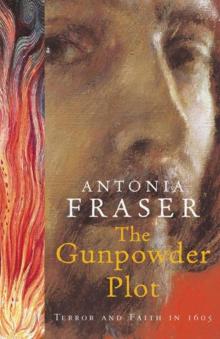 The Gunpowder Plot
The Gunpowder Plot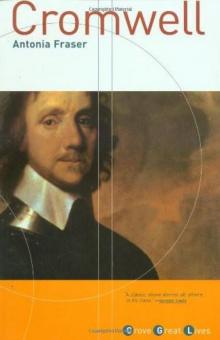 Cromwell
Cromwell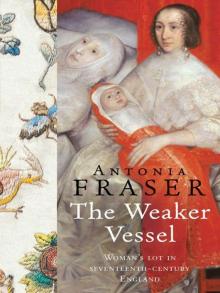 The Weaker Vessel: Women's Lot in Seventeenth-Century England
The Weaker Vessel: Women's Lot in Seventeenth-Century England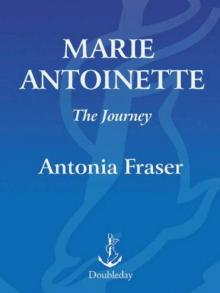 Marie Antoinette: The Journey
Marie Antoinette: The Journey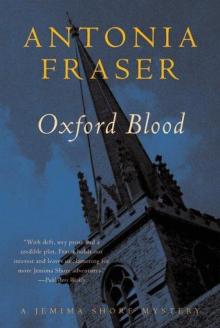 Oxford Blood
Oxford Blood Your Royal Hostage
Your Royal Hostage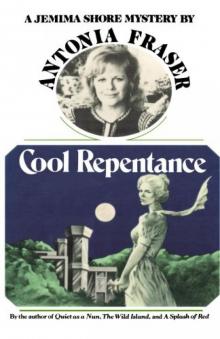 Cool Repentance
Cool Repentance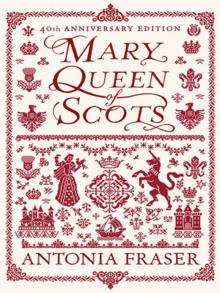 Mary Queen of Scots
Mary Queen of Scots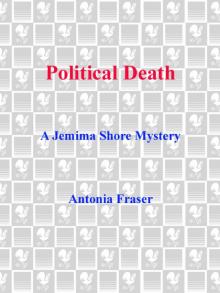 Political Death
Political Death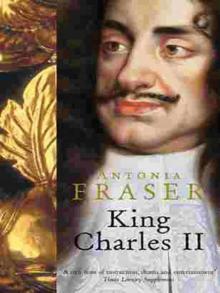 Royal Charles: Charles II and the Restoration
Royal Charles: Charles II and the Restoration My History: A Memoir of Growing Up
My History: A Memoir of Growing Up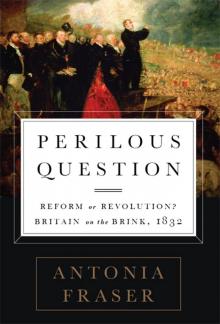 Perilous Question: Reform or Revolution? Britain on the Brink, 1832
Perilous Question: Reform or Revolution? Britain on the Brink, 1832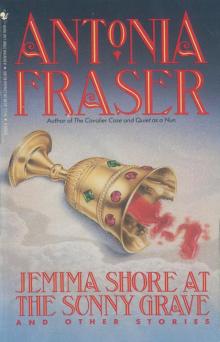 Jemima Shore at the Sunny Grave
Jemima Shore at the Sunny Grave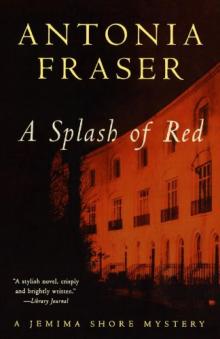 A Splash of Red
A Splash of Red Must You Go?: My Life With Harold Pinter
Must You Go?: My Life With Harold Pinter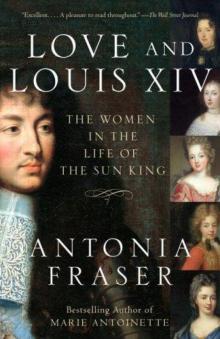 Love and Louis XIV: The Women in the Life of the Sun King
Love and Louis XIV: The Women in the Life of the Sun King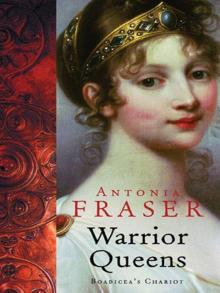 The Warrior Queens
The Warrior Queens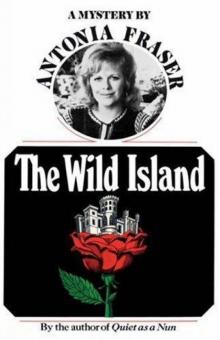 The Wild Island
The Wild Island Quiet as a Nun
Quiet as a Nun Perilous Question
Perilous Question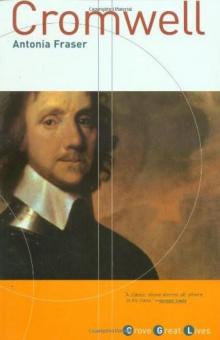 Cromwell, the Lord Protector
Cromwell, the Lord Protector Gunpowder Plots
Gunpowder Plots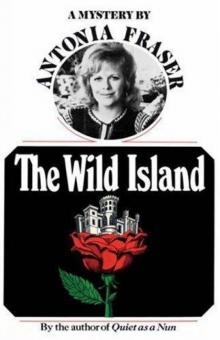 The Wild Island - Jemima Shore 02
The Wild Island - Jemima Shore 02 Gunpowder Plots: A Celebration of 400 Years of Bonfire Night
Gunpowder Plots: A Celebration of 400 Years of Bonfire Night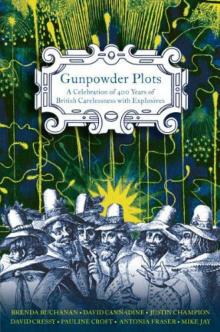 Gunpowder Plots_A Celebration of 400 Years of Bonfire Night
Gunpowder Plots_A Celebration of 400 Years of Bonfire Night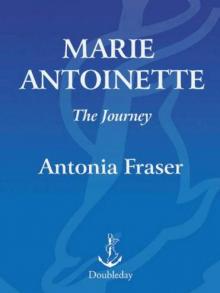 Marie Antoinette
Marie Antoinette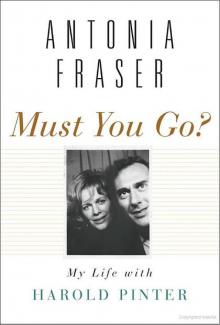 Must You Go?
Must You Go? My History
My History